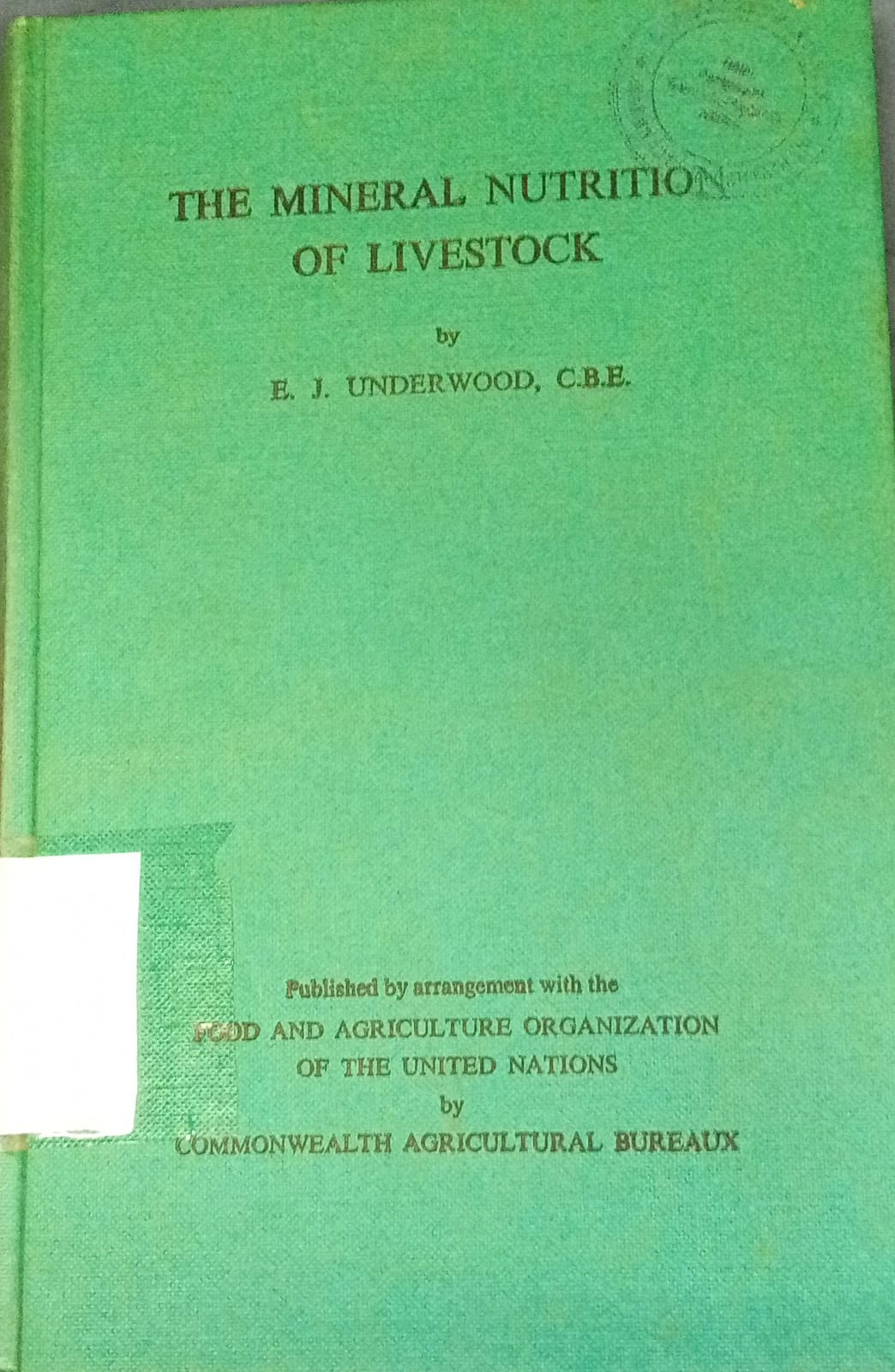|
520
|
#
|
#
|
$a Ar its second meeting in 1963, the FAO Expert Panel on Animal Nutrition recommended the preparation of a handbook dealing with mineral deficiencies in livestock, and suggested that Professor E. J. Underwood, the author of the well-known textbook Trace Elements in Human and Animal Nutrition', should be invited to undertake its preparation. The present volume derives directly from that recommendation.
Quantitative and qualitative dietary insufficiencies, imbalances and toxicities are among the factors retarding the rate of livestock development and production over large areas of the world. At the same time, the disparity between population increases, marked by the rapid expansion of industrial communities, and lagging animal production outputs, aggravates the widening divergence between purchasing power and consumer requirements for animal protein foods by the inhabitants of both urban centres and rural districts.
Certain minerals are essential for the growth, maintenance, ??- production and functioning of body tissues. They are required in certain minimal amounts and proportions to balance the body losses which are constantly occurring, so that sub-normal intakes can lead to serious metabolic and functional disturbances. In certain other cases, an excessive intake of a given element may induce toxic symptoms directly or through the disturbance of the normal metabolism of another mineral.
Usually, a fairly wide range of conditions is encountered between optimal intakes and the levels at which clearly identifiable mineral deficiency symptoms supervene. The latter are often sufficiently marked and respond so spectacularly to specific supplementation that much has been achieved in determining their causes, their modus operandi and a convenient but economical method of allevia- tion or prevention. The financial consequences of such marked deficiencies can be great and the hindrance to animal productivity can be so severe that the urge to seek remedial or preventive measures becomes urgent. Often, however, the deficiency is not sufficiently pronounced to cause the clinical manifestations which claim attention. Instead, the losses suffered by all livestock when on sub-optimal, but not grossly deficient, intakes may, in aggregate,
far exceed the total of those caused by overt insufficiency. Over 2,000 years ago Sophocles thought the fall of Thebes was hastened by heavy livestock mortalities caused by unidentified
|
